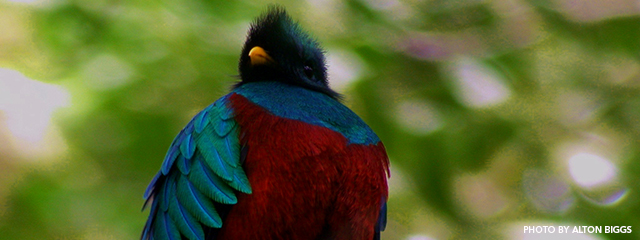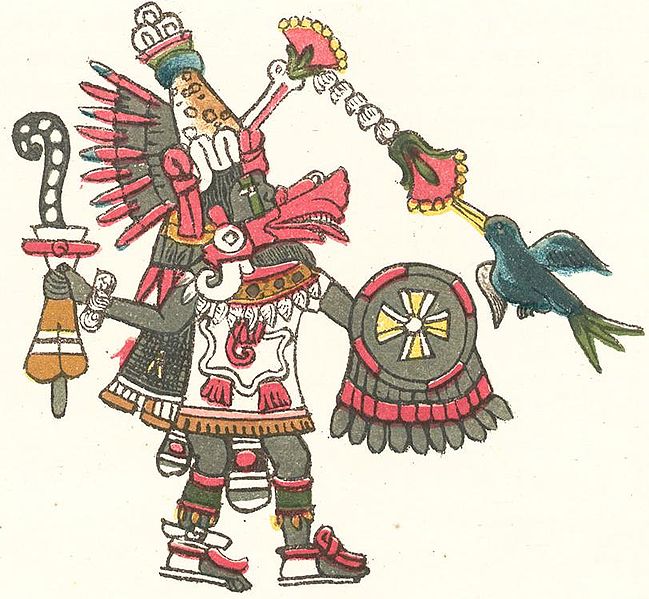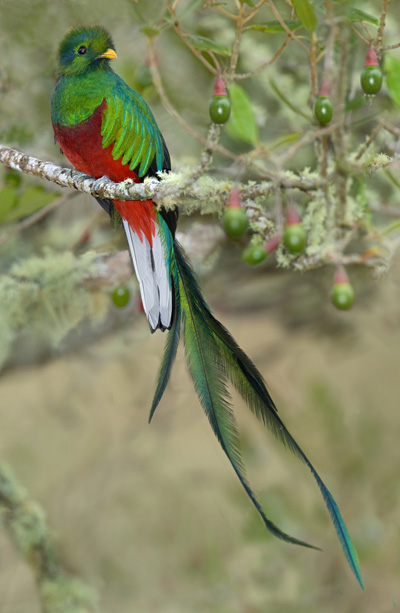The Holbrook Explorer

The Divinity of the Resplendent Quetzal
The Divinity of the Resplendent Quetzal
The Resplendent Quetzal is an important symbol in both Aztec and Mayan culture. The trogon's name is derived from the word quetzal, meaning "precious" or "sacred" in several Mesoamerican languages, so it's no surprise this bird was considered divine. The quetzal is associated with the snake god Quetzalcoatl and seen as a symbol for goodness and light. Quetzalcoatl was even represented as a serpent adorned with the feathers of a Resplendent Quetzal. 
Quetzalcoatl
As a result, the lustrous tail-feathers, which can grow to be a meter long, were donned by Aztec and Mayan rulers in their headdress. However, because the birds were sacred, quetzals were simply captured and set free after their elegant plumage was removed. The penalty for killing the bird was death.
Various ancient folklore is centered around this seemingly mythical bird. One Guatemalan legend says that when Tecún Umán, a prince and warrior of the Quiché Maya, fought against the Spanish conquistador Pedro de Alvarado, there was a quetzal flying overhead. Tecún Umán was able to disarm Alvarado on his first strike, but was killed in the second strike by a spear penetrating his chest. It is then that a quetzal allegedly flew down to Tecún Umán and dipped his chest in the brave prince's blood, which is how it acquired the red feathers on its breast. Another Mayan tale states that the quetzal was once known for its beautiful song, but after the Spanish conquered the land, it vowed only sing again when the land is finally free.
Today, the quetzal is Guatemala's national bird and the nation's currency is named after it. Although considered near threatened, many Central American countries like Costa Rica are fighting to preserve this legendary bird by protecting it in its national parks. For those interested in birding, the quetzals can be found in tropical montane cloud forests. Centuries after being considered sacred by ancient peoples, the Resplendent Quetzal is still glorified for all its majesty.
Photo by Todd Gustafson, Gustafson Photo Safari


